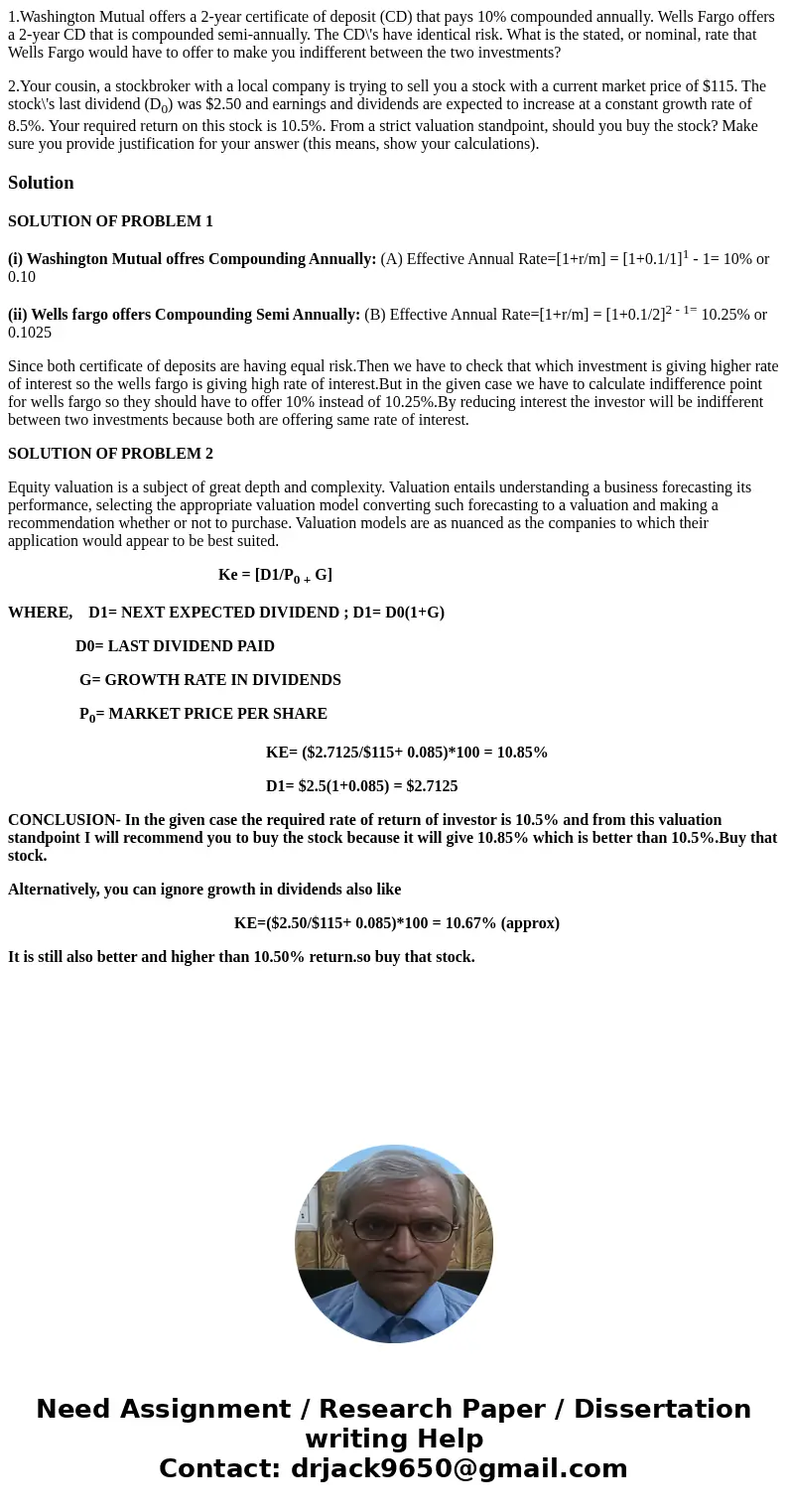1Washington Mutual offers a 2year certificate of deposit CD
1.Washington Mutual offers a 2-year certificate of deposit (CD) that pays 10% compounded annually. Wells Fargo offers a 2-year CD that is compounded semi-annually. The CD\'s have identical risk. What is the stated, or nominal, rate that Wells Fargo would have to offer to make you indifferent between the two investments?
2.Your cousin, a stockbroker with a local company is trying to sell you a stock with a current market price of $115. The stock\'s last dividend (D0) was $2.50 and earnings and dividends are expected to increase at a constant growth rate of 8.5%. Your required return on this stock is 10.5%. From a strict valuation standpoint, should you buy the stock? Make sure you provide justification for your answer (this means, show your calculations).
Solution
SOLUTION OF PROBLEM 1
(i) Washington Mutual offres Compounding Annually: (A) Effective Annual Rate=[1+r/m] = [1+0.1/1]1 - 1= 10% or 0.10
(ii) Wells fargo offers Compounding Semi Annually: (B) Effective Annual Rate=[1+r/m] = [1+0.1/2]2 - 1= 10.25% or 0.1025
Since both certificate of deposits are having equal risk.Then we have to check that which investment is giving higher rate of interest so the wells fargo is giving high rate of interest.But in the given case we have to calculate indifference point for wells fargo so they should have to offer 10% instead of 10.25%.By reducing interest the investor will be indifferent between two investments because both are offering same rate of interest.
SOLUTION OF PROBLEM 2
Equity valuation is a subject of great depth and complexity. Valuation entails understanding a business forecasting its performance, selecting the appropriate valuation model converting such forecasting to a valuation and making a recommendation whether or not to purchase. Valuation models are as nuanced as the companies to which their application would appear to be best suited.
Ke = [D1/P0 + G]
WHERE, D1= NEXT EXPECTED DIVIDEND ; D1= D0(1+G)
D0= LAST DIVIDEND PAID
G= GROWTH RATE IN DIVIDENDS
P0= MARKET PRICE PER SHARE
KE= ($2.7125/$115+ 0.085)*100 = 10.85%
D1= $2.5(1+0.085) = $2.7125
CONCLUSION- In the given case the required rate of return of investor is 10.5% and from this valuation standpoint I will recommend you to buy the stock because it will give 10.85% which is better than 10.5%.Buy that stock.
Alternatively, you can ignore growth in dividends also like
KE=($2.50/$115+ 0.085)*100 = 10.67% (approx)
It is still also better and higher than 10.50% return.so buy that stock.

 Homework Sourse
Homework Sourse